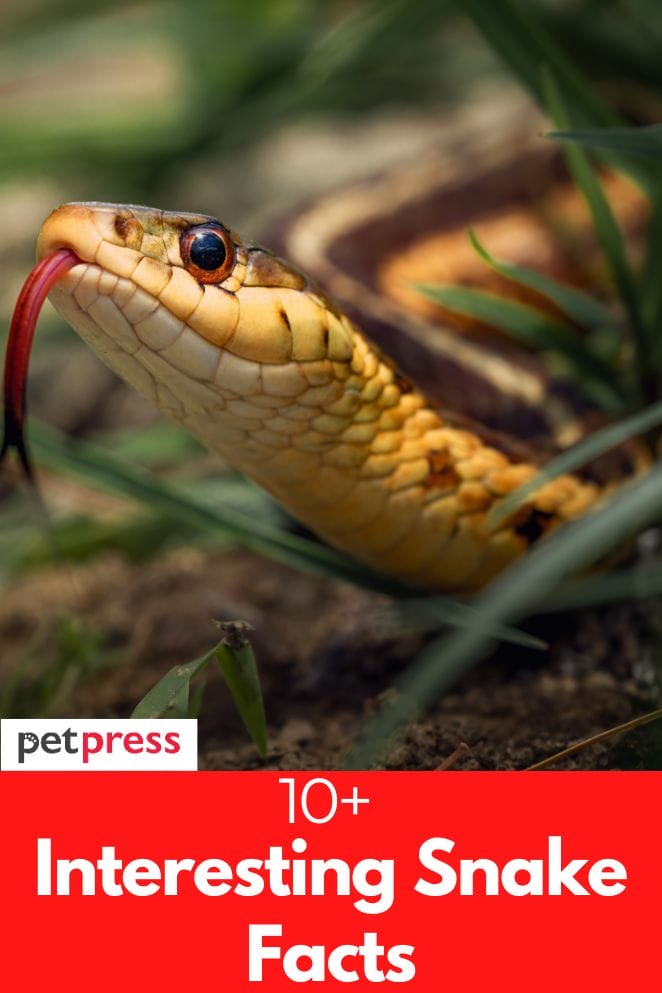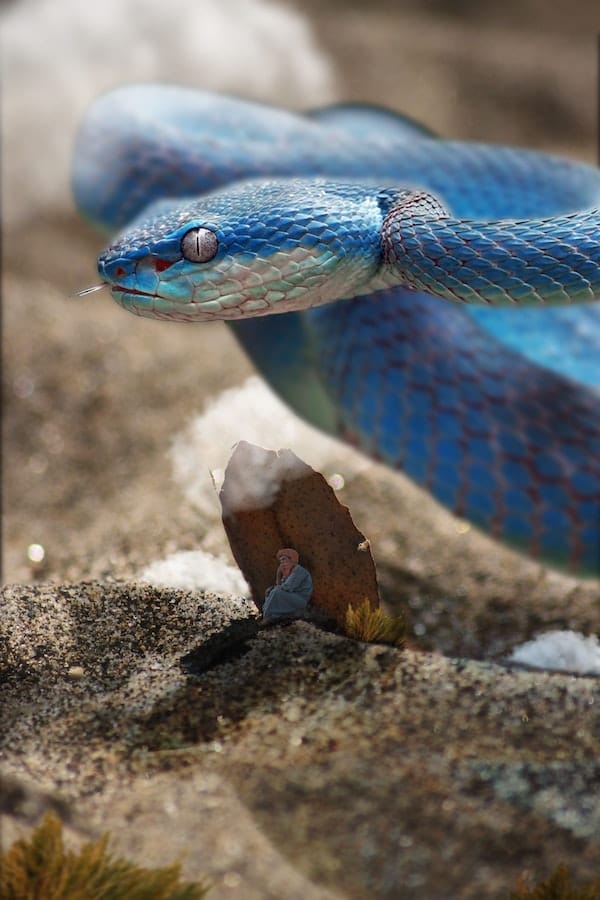
Snakes are fascinating creatures with a wide variety of interesting characteristics and behaviors.
From the smallest of species to the largest, snakes can be found all over the world in numerous habitats.
In addition to their physical abilities, they possess many unique adaptations that make them formidable predators.
Here are some intriguing facts about these amazing animals that you may not have known.
Fact #1: Snakes are cold-blooded animals.
Snakes are reptiles, meaning they belong to the group of animals known as “cold-blooded” or ectothermic.
This means that they cannot regulate their own body temperature and therefore rely on external sources such as the sun to warm up.
In colder climates, they tend to hibernate or enter a state of inactivity known as brumation to conserve energy by lowering their metabolism and body temperature.
In warmer climates, they will bask in the sun or curl up near warm rocks to heat up.
This is why you tend to see them more active during warmer months and less active during colder months.
Fact #2: Snakes swallow their prey whole.
One of the fascinating facts about snakes is that they can swallow prey that is much larger than their head.
They accomplish this by unhinging their jaws, allowing them to open wide and stretch around the animal they’re trying to consume.
Their flexible bodies help them contort and coil around large prey in order to make it easier to swallow.
The digestive process of a snake is also very efficient, breaking down the prey quickly and allowing them to go extended periods of time without eating.
Fact #3: Some snakes can fly.

Some species of snakes have adapted to their environment in unique ways, one of which is the ability to “fly.”
These species have adapted their bodies in such a way that they can glide through the air for short distances, allowing them to travel quickly between trees or other elevated areas.
This helps them find prey, escape predators, and navigate their environment more easily.
Fact #4: Snakes use senses other than sight to detect prey.
Snakes rely on their senses to locate and capture prey, and while sight is important, they also possess other senses that are used in the hunt.
Snakes have a keen sense of smell, allowing them to detect pheromones released by their potential prey from long distances away.
They can also use “heat pits” on either side of their head to detect body heat from potential prey. This helps them hone in on a target when their vision is obscured.
Fact #5: Snakes can live for many years.
Snakes have the potential to live for decades, depending on the species and environment they’re living in.
In captivity, snakes have been known to live for over 40 years, while those in the wild tend to be shorter-lived due to factors such as predators and lack of food.
In either case, they can still reach impressive ages and are a remarkable example of longevity among animals.
Fact #6: Snakes are found on every continent except Antarctica.
Snakes are found in almost every corner of the world, from deserts and forests to swamps and mountains.
They can even be found in urban areas, though this is less common.
The only continent they’re not present on is Antarctica due to its extremely cold temperatures that make it impossible for them to survive.
Fact #7: There are over 3,000 species of snakes in the world.

There are an estimated 3,000 species of snakes in the world, making them one of the most diverse groups of animals.
These species vary greatly in size and shape, from tiny burrowing worm snakes to massive anacondas and pythons.
They also inhabit many different environments, from tropical rainforests to dry deserts and everything in between.
Each species has adapted to its unique environment in unique ways, making snakes an incredibly interesting and diverse group of animals.
- Related post: Caring For A Pet Snake
- Related post: Inspiring Ideas For Naming Your Pet Snake
Fact #8: Snakes have been around since the time of the dinosaurs.
Snakes evolved from lizards during the Cretaceous Period, which was approximately 100 million years ago.
This means that snakes have been around since the time of the dinosaurs, and some species have changed very little since that time.
This makes them an incredibly ancient group of animals and one that has managed to survive for millions of years despite many environmental changes.
Fact #9: The longest snake in the world is the reticulated python.
The reticulated python is the longest snake in the world, growing up to 10 meters (33 feet) in length.
This species can be found throughout Southeast Asia and subsists primarily on mammals, birds, and other reptiles.
They are also one of the few species of snakes that have been known to attack humans, though this is extremely rare.
Fact #10: The heaviest snake in the world is the green anaconda.
The green anaconda is the heaviest snake in the world, reaching weights of up to 250 kilograms (550 pounds).
This species can be found throughout South America, primarily in rainforest habitats.
Unlike most snakes which feed on smaller animals such as rodents or birds, the anaconda feeds mostly on larger prey such as deer and caiman.
Fact #11: Snakes have symbolic significance in many cultures.
Snakes have been seen as symbols of power, wisdom, and rebirth since ancient times, appearing in the mythology and folklore of many different cultures around the world.
In some cultures, they are seen as spiritual guides or protectors, while in others, they’re seen as sinister omens.
Regardless of how they’re viewed, snakes have been an important and influential force in the cultural history of many different societies.
Fact #12: Some snakes are venomous and can be dangerous to humans.
Though most snakes are harmless to humans, some species possess venom that can cause serious harm or death if it comes in contact with human skin.
These venomous species should be avoided and respected at all times, as they can pose a serious risk to anyone who encounters them.
Fact #13: Snakes have two lungs, but they often breathe through their skin.

Snakes have two lungs, just like humans, but they often breathe through their skin as well.
This is because snakes don’t have the same ribcage structure that mammals have to help them draw air into their lungs.
Instead, they rely on environmental humidity and their own skin to absorb oxygen from the air.
Fact #14: Snakes play an important role in the environment.
Snakes are an important part of the ecosystem, as they feed on a variety of animals that would otherwise become overpopulated.
They also help to keep rodent populations down, which can benefit both humans and other animal species.
Their presence in the environment is essential for maintaining balance and promoting healthy ecosystems.
Overall, snakes are an incredibly diverse and fascinating group of animals with a history that spans millions of years.
From the largest to the smallest, each species is unique and plays an important role in its own environment.
They symbolize power and wisdom in many cultures, but they should also be respected for their potential danger.
Snakes make up one of the oldest and most successful groups of animals on Earth, and their presence is essential for the health of our planet.


GIPHY App Key not set. Please check settings